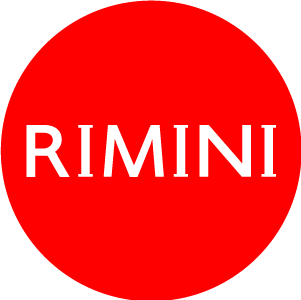Rimini has two thousand years of stories, common or extraordinary, of powerful lords, visionary geniuses and humble fishermen, gathered one on the other between the soil that covers them and the new face of the city that overlooks them. Among these stories, there is that of a doctor from the ancient Ariminum, who came to light together with his house, the "surgeon's house". Among the most important national archaeological finds, the domus is a Roman house dated around the third century AD, re-emerged from the ground and from history in the heart of Piazza Ferrari. The name that has been attributed to it, "surgeon's house", is due to the profession of its Dominus, Eutyches, which became evident to archaeologists thanks to the very rich set of surgical instruments, over 150 finds, in use in antiquity.
We know little about Eutyches, the many remains found, the magnificent mosaics that adorned the domus and the engravings on the walls made by satisfied patients tell us about him. Thanks to one of these engravings "Eutyches homo bonus" (Eutyches good man), in one of the rooms that was to serve as the surgeon's infirmary, we can give him a name and a story. History that probably begins in Greece, as the name of Hellenic origin suggests, as well as the many writings in Greek found among the finds and as the style of the house, its decorations and its oriental-style mosaics seem to underline.
But why would a Greek doctor have moved to Ariminum? This too is told, or at least left to imagination, by the rich finds, in particular by the so-called “Diocles' spoon”. Unique in the world, the spoon is a Roman surgical instrument designed to extract arrows from the body of soldiers, a tool not useful for a doctor who carries out his activity in a quiet city in the heart of the empire. From this discovery, emerges the story of Eutyches who, from the eastern possessions of the empire, served as a war doctor for the Roman legions, before settling and practicing the medical profession in a large port city: Rimini.
But what remains of the Eutyches house today?
The colorful legacy of mosaics and wall paintings that enriched the rooms is now an open-air museum, visible at 360 degrees through a glass structure that defends its integrity. Inside, between elevated walkways that allow you to walk over the archaeological site, you can see the small entrance that led into a hallway and then into an internal corridor; on one side of this there was a garden space, while on the other there were several rooms delimited by clay walls resting on masonry bases.
The residential rooms, decorated with polychrome frescoes and mosaic floors with geometric and figurative motifs, included a dining room (triclinium), a bedroom (cubiculum) and two living rooms, the first of which is equipped with a valuable mosaic with Orpheus among the animals; in a more secluded position were some service rooms: a heated room (hypocaust), a latrine and, upstairs, the kitchen and a pantry.
From the structure, which was destroyed by a fire shortly after the middle of the third century, the archaeological excavation has recovered and secured a rich treasure of finds at the nearby museum of the city. Among the rooms dedicated to the domus, with rooms in which the "medical taberna" is faithfully reconstructed as it must have appeared 2000 years ago, it is now possible to admire the 150 medical instruments found, the everyday objects of Eutyches and the polychrome frescoes recovered between the ruins portraying floral or animal motifs, among which an impressionistic view with a port scene stands out.
Watch the video of the archaeological site (Italian).


